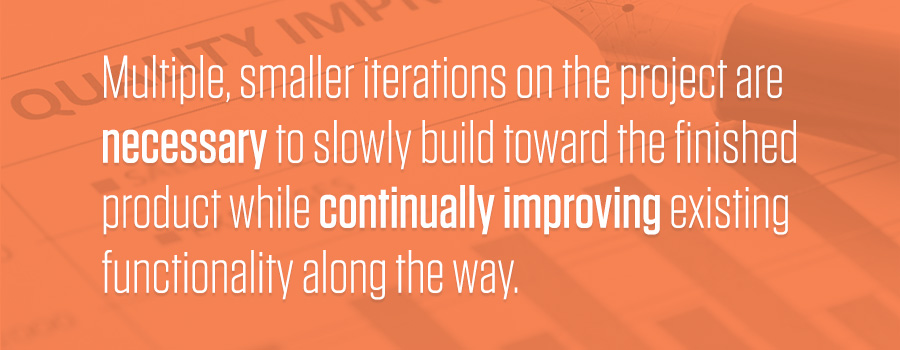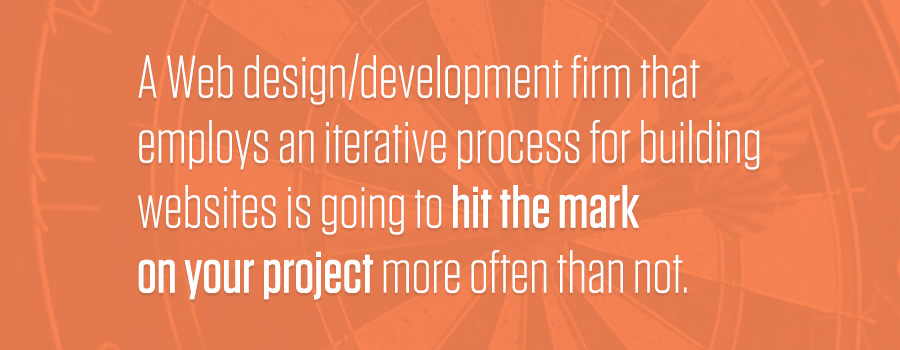
How An Iterative Process Can Improve User Experience On Your New Website
Many Web development companies use a waterfall process to build their websites. This is typically a five-step process as follows:
- Plan everything
- Build everything
- Test everything
- Review everything
- Launch
At Straight North, we have adopted an agile methodology to development, which means a more iterative approach is taken when planning and building each website here. This is typically a four-step process that is repeated as follows:
- Plan
- Build
- Test
- Review
These four steps are repeated for each main piece of the project until the entire site is complete, at which point a final review of everything is done — followed by the site launch.
What exactly is an iterative process?

An iterative process simply means that you are breaking down your project into multiple, smaller pieces — then completing those pieces one at a time, along with plenty of review and input from internal and external teams along the way. This process (correctly) assumes that you don’t know everything at the beginning of the project, and working under that assumption, you don’t try to build the entire application at once.
Multiple, smaller iterations on the project are necessary to slowly build toward the finished product while continually improving existing functionality along the way.
Working in iterations is a common practice in software development, as large-scale development projects are often very complex and require a lot of trial and error. You most likely know the functionality that needs to be built at the start of the project, but you don’t know exactly how you are going to build it and exactly how it is going to function.
The details on how things will function and look come to light as you dig in and start developing and designing portions of your website or application. Because of this, iterative development has become the standard for developing websites and Web applications. The goal is to create smaller pieces of the application quickly, review them (internally and with the client) and improve upon them in the next iteration. Each layer keeps building on the last one with continual enhancement and improvement.
The reason this process works so well is because it allows for continual feedback from the project manager and the client, rather than having your development team sit in a room for four months building the entire application prior to showing it to the client for the first time — and asking for feedback on the whole thing.
What happens if your client hates it at that point? What if the client wants you to change a piece of core functionality that the entire application relies on? What happens if the developers missed a key piece of info at the beginning of the project that caused them to miss the mark completely?
How can this process improve user experience on my website?

A Web design/development firm that employs an iterative process for building websites is going to hit the mark on your project more often than not. It will break up the website into many smaller pieces that are quickly knocked out and shown to the client for input and changes.
These frequent touch points allow the client and internal project managers to make sure the goals of the project are always being met, the layout of the site is the best it can be, and that the user experience is fully vetted for ease of use and driving conversions.
With each step, the client and project manager are in constant communication to ensure all the project goals are being met — and if they aren’t, what needs to be done to ensure they will be met. All these changes are documented and rolled into the next iteration, which is then knocked out and shown to the client. As each step is approved, work on the next set of functionality or set of pages is started.
By continually fine tuning each portion of the website and continually getting client feedback on each step of the project, we ensure all goals are being met and the user experience of the site is as good as it can be. This translates to a better end product and an improved experience for users of the new website. All of this should lead to higher conversion rate and more conversions from your new website, which should be the overall goal of any new website project.




